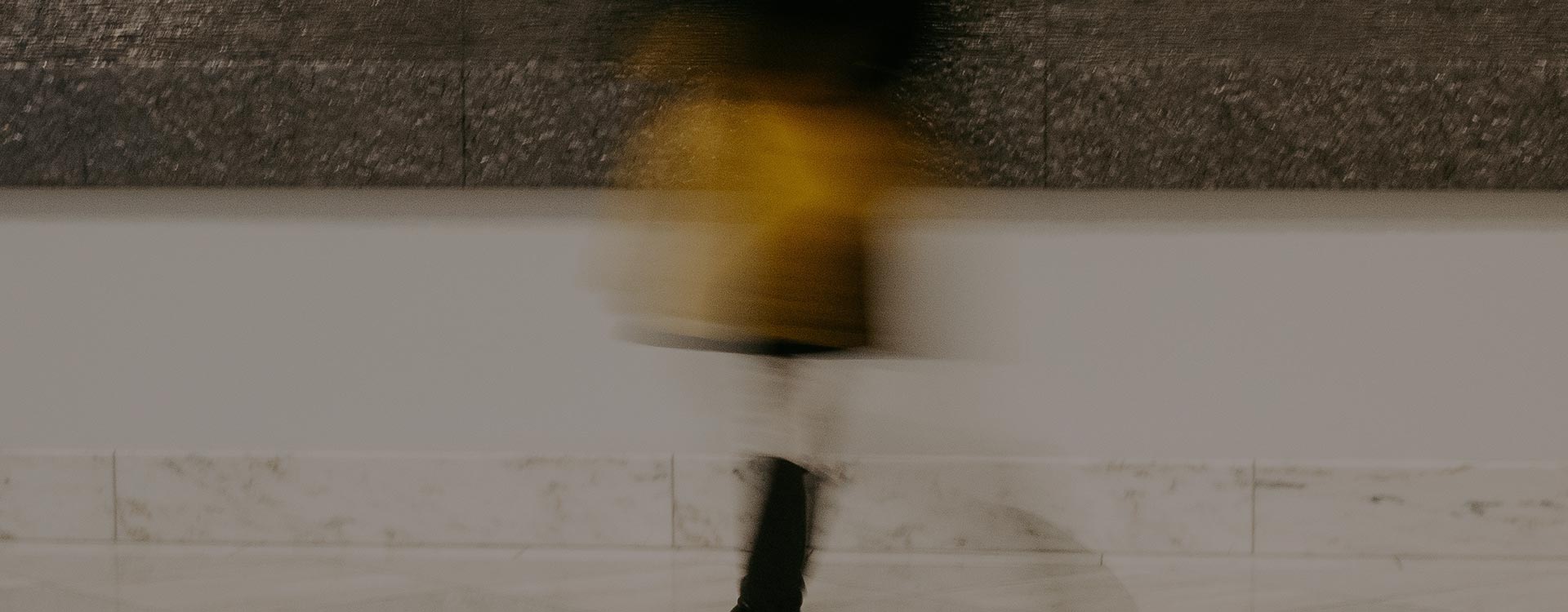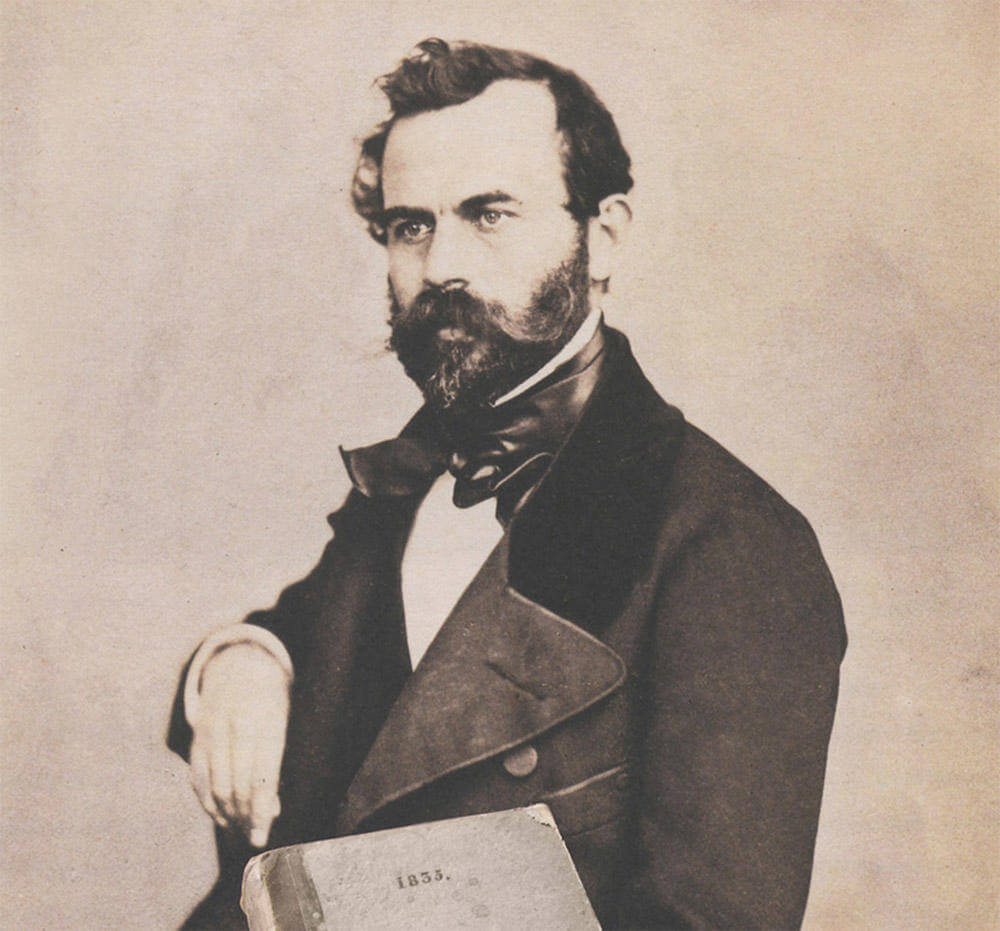
ÉDOUARD BALDUS
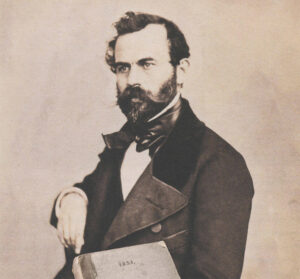
Country: France
Birth: 1813 | Death: † 1889
Édouard Baldus was a French landscape, architectural and railway photographer, born on June 5, 1813 in Grünebach, Prussia. He was originally trained as a painter and had also worked as a draughtsman and lithographer before switching to photography in 1849.
In 1851, he was commissioned for the Missions Héliographiques by the Historic Monuments Commission of France to photograph historic buildings, bridges and monuments, many of which were being razed to make way for the grand boulevards of Paris, being carried out under the direction of Napoleon III’s prefect Baron Georges-Eugène Haussmann. The high quality of his work won him government support for a project entitled Les Villes de France Photographiées, an extended series of architectural views in Paris and the provinces designed to feed a resurgent interest in the nation’s Roman and medieval past.
In 1855, Baron James de Rothschild, President of Chemin de Fer du Nord, commissioned Baldus to do a series of photographs to be used as part of an album that was to be a gift to Queen Victoria and Prince Albert as a souvenir of their visit to France that year. The lavishly bound album is still among the treasures of the Royal Library at Windsor Castle. In 1856, he set out on a brief assignment to photograph the destruction caused by torrential rains and overflowing rivers in Lyon, Avignon, and Tarascon. He created a moving record of the flood without explicitly depicting the human suffering left in its wake.
Baldus was well known throughout France for his efforts in photography. One of his greatest assignments was to document the construction of the Louvre museum. He used wet and dry paper negatives as large as 10×14 inches in size. From these negatives, he made contact prints. To create a larger image, he put contact prints side by side to create a panoramic effect. He was renowned for the sheer size of his pictures, which ranged up to eight feet long for one panorama from around 1855, made from several negatives.
Despite the documentary nature of many of his assignments, Baldus was inventive in overcoming the limitations of the calotype process (described here). He often retouched his negatives to blank outbuildings and trees, or to put clouds in white skies; in his composite print of the medieval cloister of St. Trophime, in Arles (1851), he pieced together fragments of 10 different negatives to capture focus in-depth in a panoramic view of the interior space and also render detail in the brightly lit courtyard outside. He died in 1889 in Arcueil, France.
Source: Wikipedia
Baldus was one of the great calotypists of the 1850s, producing works of an unprecedented range and scale. He moved to Paris in 1838 to study painting alongside other future photographers such as Le Gray, Le Secq, and Nègre. He frequently retouched his paper negatives, adding pencil and ink, to add clouds or clarify details, then printing his own large-scale negatives. He was also adept at stitching several negatives together to re-create architectural views, most famously in his views of the cloisters of Saint Trophime.
Famed especially for his depiction of architecture, Baldus not only documented the modernization of Paris but also traveled widely through France recording modernity and new construction – including new railways and aqueducts, as well as the building of the new Louvre. In 1851 the Commission des Monuments Historiques cited Baldus as one of the five best architectural photographers and he was commissioned to record the monuments of France for what became known as the Mission heliographic. His beginnings in photography are not well documented before his participation in the Mission héliographique, although it is known that he took photographs of Montmajour in 1849.
Source: James Hyman Gallery
“Everyone knows Mr. Baldus,” a reviewer wrote in 1859. By the mid-1850s, Édouard-Denis Baldus was the most successful photographer in France and at the height of his career. He began as a painter, turning to photography in 1849 when paper negatives were just becoming popular. Throughout much of his life, he listed himself in city directories as “peintre photographe” (painter photographer), in reference more to his training than to his practice. In 1851 Baldus became one of the forty founding members of the Société Héliographique, the first photographic organization in the world.
Baldus specialized in images of the landscape, architecture, and railways. In 1851 the Commission des Monuments Historiques (Historic Monuments Commission) asked Baldus to document architecture in France. These assignments, which were awarded to several photographers, were called missions héliographiques. In 1855 Baldus received his largest commission to document the construction of the Musée du Louvre.
Photographic enlargements were not yet possible in the 1850s, so Baldus’s photographs were contact prints from negatives as large as 10 x 14 inches. He often joined together several negatives to produce panoramas, creating images on an even grander scale.

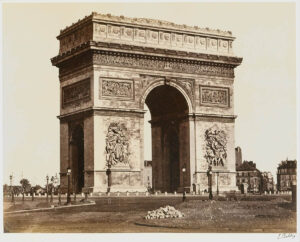
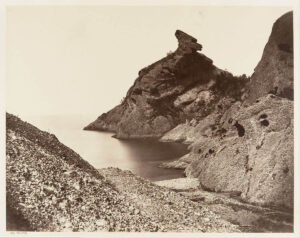
GALLERIES

